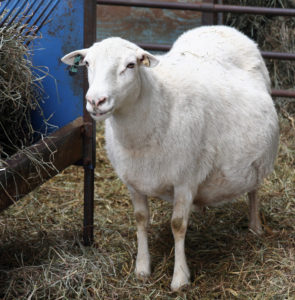Main Content

Once your ewes are getting close to their due date, which is approximately 4-1/2 to 5 months after being bred, you need to have your barn ready. You want to protect the newborn lambs from the elements for the first few days or weeks. They always seem to be born on the coldest day of the year!
Approximately a month before lambing, it’s recommended to vaccinate the mothers with CDT, which prevents overeating disease (Enterotoxemia) and tetanus. This immunity will carry over to the lambs to help keep them healthy.
Items to have on hand include:
- Old towels or a hair dryer to help dry them off immediately after being born to prevent the lambs from getting chilled. It’s recommended to keep a few towels in your barn in a clean paper bag so they will smell like your barn. The mother is less likely to reject her lamb if it “smells right.”
- Iodine to dip the navel in to prevent infection.
- A separate pen in a protected area of your barn with adequate space for the mother and lamb to move around in but not so big that the lamb could get lost in it. Use plenty of fresh bedding.
- A heat lamp to help keep the chill off the lamb for the first day or so. It’s recommended to keep the heat lamp on for the first 24 hours and then only at night for the next 1-2 nights. After that lambs should be fine in the barn with their mother and the other sheep.
- A supply of colostrum and a baby bottle to feed the lamb in case the mother’s milk is slow to come in.
- Ear tags to identify the lambs.
- Tetanus antitoxin and small rubber bands for docking the tails. Tetanus antitoxin is recommended when docking a lamb to prevent the possibility of the lamb getting infected.
- And your vet’s phone number in case there is a problem.
When the ewe’s due date is nearing, you should be checking your barn several times a day and evening. Most ewes will start to get an udder, but first timers may not. Some may get pink and swollen in the back end. Within 24 hours of lambing, you may notice that the ewe appears sunken in front of her hip bones. Sometimes a ewe will start making noises as if she’s talking to her newborn lamb, but it isn’t born yet. Other ewes will just pop the lamb out without any warning.
After lambing, feed your ewe sufficient high quality grain and hay as well as lots of water for the number of lambs she is feeding. She needs to produce enough milk for them to grow well.
After two to three days, providing all is going well and the lambs are thriving, the lambs can go with their mothers into a small flock, or with a few other mothers with lambs. Make sure you have ear tagged your lambs so you know which lambs belong to which mother. When the lambs are a few days old, their tails should be docked. Once the lambs are a couple of weeks old, they should be strong enough and smart enough to be in with the rest of the flock.
Once the lambs are a week old or so, a creep should be set up for the lambs to enter without their mothers to get extra feed. This will be further discussed in the next article.
Here are the desired specifications for a lambing pen:
- 40 inches high
- 4’-6’ long depending on the size of your sheep
- The water bucket should be off the ground so the lamb is less likely to fall in and drown
- The heat lamp should have a frame around it to prevent the mother from breaking the bulb. The frame also encourages the lamb to sleep under the heat lamp, which also prevents the mother from accidentally stepping on the lamb and injuring it.
- The panels at the bottom of the pen should be about 14” high to prevent the lamb from crawling under the side panels and getting out.
Susan Miller, Hunterdon County 4-H Volunteer